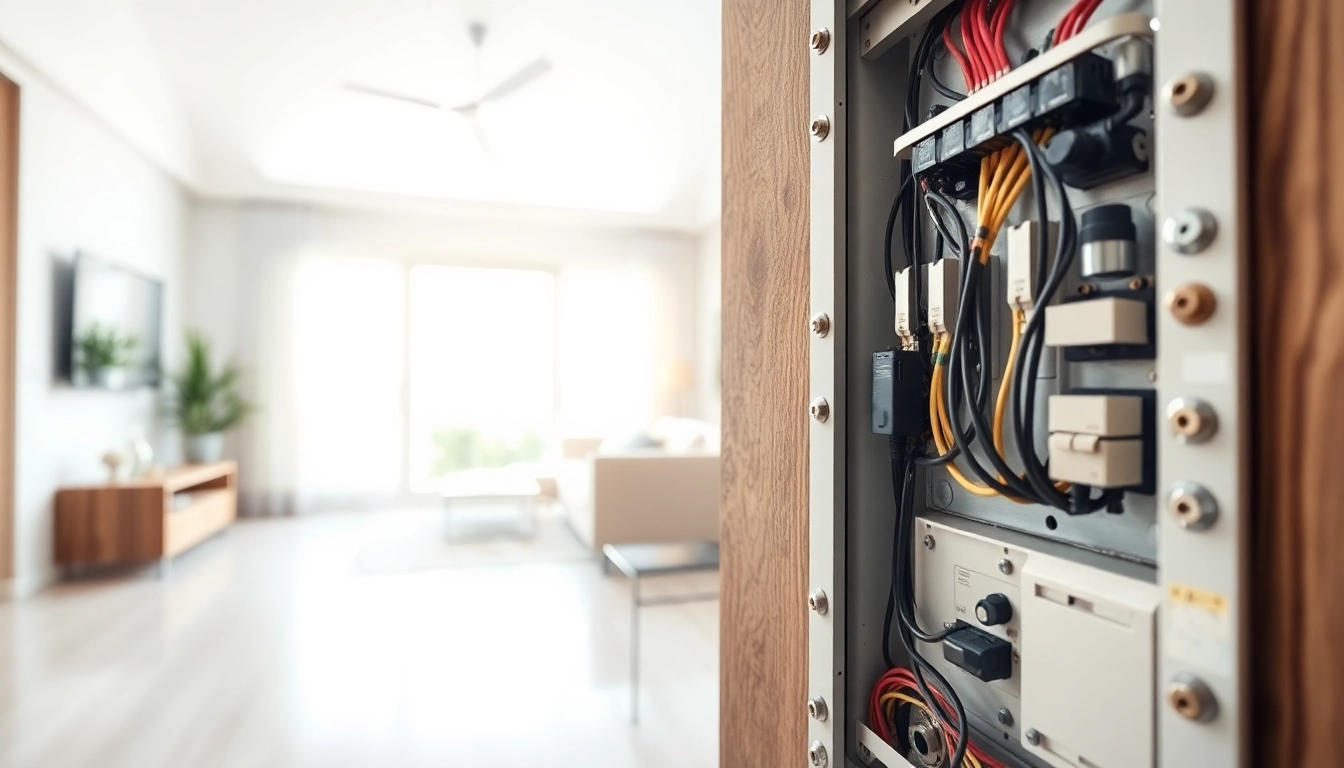Essential Insights on Electrical Panels: When to Upgrade and Why
Understanding Electrical Panels
Every homeowner has an electrical panel, but not everyone understands its significance. The Electrical Panel acts as the hub of your electrical system, controlling and distributing electrical power throughout your home. In this section, we will delve into what an electrical panel is, its key components, and how it functions.
What is an Electrical Panel?
An electrical panel, often referred to as a breaker box or service panel, is a critical part of your home’s electrical system. It connects your home’s wiring to the external power grid, allowing for the distribution of electricity to various circuits within your property. The electrical panel is designed to ensure that electricity flows correctly and safely through your home, and it plays a vital role in protecting your circuits from overloads.
Key Components of an Electrical Panel
To understand how an electrical panel functions, it’s essential to familiarize yourself with its main components:
- Main Breaker: This is the switch that controls power to the entire panel. It can be turned off to shut down all electricity to the house.
- Branch Circuit Breakers: These are individual breakers that control power to different circuits in the home, such as lighting, outlets, and appliances.
- Bus Bars: These conductive strips distribute electricity to various branch breakers. The main bus bar connects directly to the main breaker.
- Neutral and Ground Bars: These bars are where the neutral and ground wires connect, ensuring safety and proper circuit function.
- Panel Enclosure: This is the metal housing that protects the internal components and can be locked for safety.
How Electrical Panels Work
The electrical panel operates by delivering electricity from the utility provider to the home. When you turn on a light switch or use an appliance, power flows from the panel through a circuit, allowing devices to operate. The circuit breakers within the panel act as protective mechanisms; if too much electricity flows through a circuit, the breaker trips and cuts off power to prevent overheating and potential hazards.
Signs You Need to Upgrade Your Electrical Panel
As our electrical needs grow, an outdated electrical panel can become a liability. This section explores the key indicators that suggest it’s time for an upgrade.
Common Warning Signs
Awareness of warning signs can prevent larger issues down the road. Here are some common indicators that your electrical panel may need an upgrade:
- Frequent Tripping: If your circuit breakers are tripping frequently, it might be a sign that your panel is overloaded.
- Burning Smell: Any burning odors or heat coming from the panel indicate serious electrical problems.
- Flickering Lights: Lights that flicker or dim when using appliances can signal electrical issues within the panel.
Age of Your Electrical Panel
The age of the electrical panel plays a crucial role in determining its reliability. Most electrical panels have a lifespan of about 20 to 30 years. If yours is approaching or has surpassed this age, consider upgrading—even if it appears to be functioning adequately.
Power Demand Changes
As families grow or as homeowners renovate, their power needs often increase. If you’ve added significant electrical loads, such as a home office or game room, and your panel can’t handle the demand, then upgrading is crucial to avoid overloading the system.
Choosing the Right Electrical Panel
Selecting the right electrical panel is vital for ensuring safety and optimal performance in your home. Here are the key factors to consider.
Types of Electrical Panels
There are several types of electrical panels available, each suited for different needs:
- Main Breaker Panel: This type is suitable for most homes and includes a main breaker plus several branch circuits.
- Subpanels: Used when the main panel is insufficient for electrical demands, subpanels can help distribute power more effectively.
- Smart Panels: These high-tech panels offer real-time monitoring, allowing homeowners to track power usage and manage electricity consumption intelligently.
Factors to Consider When Selecting
There are several factors to weigh when selecting an electrical panel:
- Amperage Needs: Most homes require a minimum of 100 amps, but larger homes may need a 200-amp panel.
- Future Expansion: It’s advisable to choose a panel that can accommodate future electrical needs, so consider opting for a higher amperage if you plan to expand.
- Type of Circuits: Consider the number of circuits needed for your home, including any specialized circuits for appliances or dedicated circuits for home theaters.
Brands Overview: Quality vs. Cost
There are several reputable brands producing electrical panels, each with its strengths and weaknesses. Here’s an overview of some popular choices:
- Square D: Known for its reliability and quality, Square D panels are a top choice among homeowners and electricians.
- GE: GE panels are well-regarded for their affordability and functional design, making them popular for residential use.
- Siemens: Siemens offers advanced technology options, perfect for smart-home applications.
Installation Process for New Electrical Panels
The installation of an electrical panel is a critical task that requires careful planning and expertise. Here, we discuss the installation process, including whether to go DIY or hire a professional.
DIY vs. Professional Installation
While some homeowners may be tempted to tackle electrical panel installation themselves, it is typically best left to the professionals. Electrical work can be complex, and improper installation can lead to dangerous situations. Licensed electricians have the respective knowledge and experience to perform the job safely and correctly.
Permits and Safety Regulations
Upgrading your electrical panel often requires permits to ensure conformity with local building codes and safety regulations. It’s essential to check with local government or building departments before attempting an installation to ensure compliance.
Installation Timeline and Costs
The timeline for installing a new electrical panel can vary based on the complexity of the job. Generally, a professional can complete the installation in a few hours to a day. The cost of installation varies widely, influenced by factors such as location, existing infrastructure, and the quality of the panel chosen. On average, homeowners can expect to pay between $1,500 and $3,000 for a complete panel upgrade.
Maintenance and Care for Your Electrical Panel
Proper maintenance of your electrical panel ensures safety and longevity. This section will provide essential maintenance tips and common issues to watch for.
Routine Check-ups and Inspections
Periodically checking your electrical panel can help identify problems before they escalate. Consider scheduling a professional inspection every few years; a technician can spot signs of wear and recommend necessary repairs.
Signs of Neglect or Damage
Neglect can lead to significant problems in electrical systems. Look for these signs indicating potential damage or neglect:
- Rust or Corrosion: Rust on the panel can indicate water damage, which could lead to shorts or electrical failures.
- Burn Marks: Any discoloration on the panel or the breakers is a sign of burning and should be addressed immediately.
- Loose Connections: Check to ensure all connections are secure; loose wiring can lead to arcing and potential fire hazards.
Best Practices for Long-lasting Performance
To ensure your electrical panel operates smoothly and lasts as long as possible, consider these best practices:
- Keep the panel clean and free of debris.
- Avoid overloading circuits by distributing electrical loads evenly.
- Never ignore tripped breakers; investigate and resolve the root cause.
- Label each breaker clearly for easy identification during troubleshooting.
In conclusion, understanding your electrical panel is crucial not only for safety but also for the overall efficiency of your home’s electrical system. By recognizing signs of when to upgrade, selecting the right components, and maintaining your panel correctly, you can ensure that your home remains safe and well-powered for years to come.









Post Comment